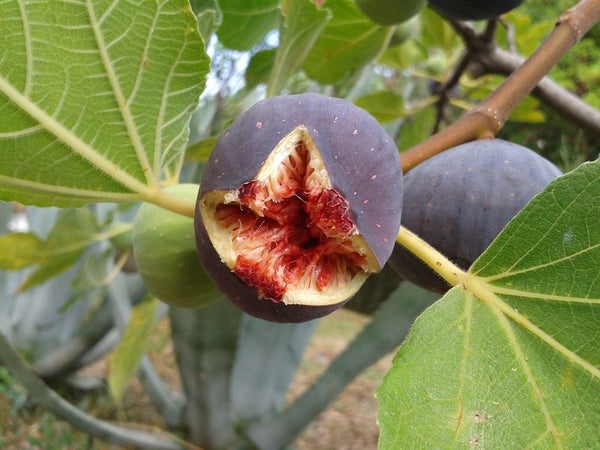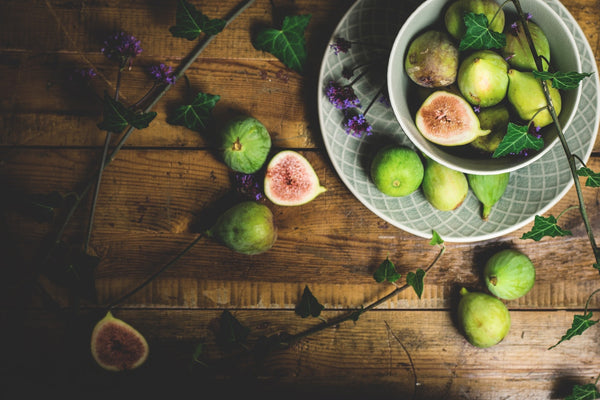Figs are delicious, healthful and easy-to-cultivate. And though many are intimidated by caring for their own at-home fruit tree, you shouldn’t be daunted – Fig Trees are actually easy to buy and plant. With a bit of planning and our care tips and tricks, you’ll have your own harvest in no time!
Why You Should Buy Fig Trees
So, why else are Fig Trees a must-have? Well, their versatile fruit is an amazing source of fiber, for starters. But the Fig itself is so delectable that you’d never know you’re eating a heath food. Plus, this sweet, nutritious nature’s candy is super easy to help thrive and eventually harvest.
Are Figs Healthy?
Short answer: Yes! And it's not just known for its fiber – the Fig is heralded for its creamy texture, subtle undertones of vanilla flavor, and vibrant exterior. Even better? According to the American Diabetes Association, Figs help functional control of diabetes. There’s nothing like health food that tastes like decadent candy!
How to Plant Fig Trees
Because the fig has its roots in Northern Asia, where a tropical climate with a high level of sun exposure is the norm, adequate sunlight is vital. That means that whether you’re planting your tree indoors or outdoors, you should place it in an area that receives six hours of sunlight or more per day.
If you’re planting it in the ground outdoors, it’s best to plant Fig Trees beside a structure, like a brick wall or other plants. This ensures that your Fig Trees get proper exposure without too much sunlight.

Can You Grow Fig Trees Indoors?
So you’ve chosen your desired area, indoors or out, and have your Fig Trees on hand. Thankfully, once everything is scouted out, it’s pretty figgin’ easy during the remainder of the process.
When you’re planting Fig Trees in a container, transfer the plant from its shipped container to a new pot. The container should be twice the size of the root ball, leaving room for establishment, and should have drainage holes on the bottom. After you’ve planted your Fig in its chosen container, ensure you water well to settle the roots and help establishment.
The steps are similar for ground planting. To help your Fig Trees’ roots get established in the ground, dig your hole two to three times the size of the root ball and loosen the roots as you place it in your hole. Backfill any dirt and tamp down gently, watering the tree after the process is complete.
How to Care For Fig Trees
Basically, planning is effortless and planting is even easier. But what about long-term care? Luckily, we’ve got you covered – just keep these tips and tricks in mind, and you’re well on your way to enjoying home-grown deliciousness.
How Often Should You Water Fig Trees?
The first rule of (green) thumb: The watering needs of Fig Trees depend largely on the soil and the weather. However, Fig Trees generally need around 1 to 1.5 inches of water each week, either from irrigation or rain.
How to Fertilize Fig Trees
To feed Fig Trees, we recommend using a general-purpose fertilizer with a formula of 8-8-8 or 10-10-10. And it’s best to provide fertilizer for Fig Trees only when symptoms of slow growth or pale leaves are apparent. Also, if you plant your Figs in sandy soil, you’ll probably need to fertilize annually. You’ll also need to fertilize any of your Fig Trees that are surrounded by other plants that compete for nutrients.
It’s best to split the feeding over several months though, which ensures your trees don’t get too much nitrogen at one time.
How to Prune Fig Trees
After your Fig Trees are established, prune them during the dormant winter season. Start by removing any branches that are not growing out from your selected fruiting wood, as well as any dead or diseased areas.
If there are suckers growing from the base of the Fig, they should be removed as well. And for larger, sweeter fruit during the next year, cut back the main branches by one-third to one-quarter. This helps your tree put more energy to the remaining fruit!
Do Fig Trees Need a Pollinator?
As far as pollination goes, our Fig Trees are self-fertile, meaning they bare plenty of fruit without a pollinator.

How to Harvest Figs
We’ve gotten to the best part! And because our plants are grafted, you may get fruit within the first year. You’ll know your figs are ready to be harvested once they droop, soften, and change color, generally.
Keep in mind that it’s important to examine your figs first before picking because they don’t ripen off the tree. It is best to eat them right off the tree or shortly afterward, but you can place your figs in the refrigerator for up to two to three days to get the same straight-off-the-tree quality.
What Are the Most Popular Fig Trees?
There’s a lot to love when it comes to all Fig Tree varieties, but we’re highlighting five of our favorites to showcase just how adaptable and coveted these fresh little cultivars are.

1. Black Mission Fig
The main draw of the Black Mission? You don’t have to worry about your climate.If it gets cold where you live, you can plant these Fig Trees in a pot and bring indoors during freezing temperatures.
Plus, its size is adaptable to your needs. You can pot and prune the plant to keep it more manageable and small, or you can plant it in your yard and watch it expand.
2. LSU Purple Fig
The LSU is known for being a hardy tree that delivers super-sweet fruit with little effort. Bred by the Louisiana State University College of Agriculture for superior disease resistance, it blends ease with amazing results.
And best of all, it produces fruit as early as the second year, with small yet succulent crops.
3. Chicago Cold Hardy Fig
No matter how cold it gets, the Chicago Hardy Fig comes through. The Chicago Fig can literally freeze over and still come back strong the following spring, producing bushels of plump, delicious figs you’ll love.
Add to that the deep purple hue of the fruit and a silhouette that responds well to pruning, and you have a stunning, functional tree that will enhance any planting location you choose.
Frequently Asked Questions
Where do Fig Trees grow best?
Fig Trees grow best in an area that receives 6-8 hours of sunlight per day. You’ll want to make sure your planting site has well-draining soil, and consider planting next to a structure, as this will help protect your Figs from getting too much sunlight. Fig Trees can also be grown in containers and brought indoors for planting flexibility.
Check out our Fig Tree Collection for specific growing zones for each of our varieties.
How long does it take for a Fig Tree to bear fruit?
Fig Trees will typically fruit within the first few years of planting. However, specific fruit timing will vary by type, location and growing conditions. Because our Fig Trees are grafted, many of them will fruit within the first year!
How big does a Fig Tree get?
The size of a Fig Tree will depend on your specific variety, location, care and growing conditions. Some varieties are dwarf sized and some are larger. For example, Little Miss Figgy grows to about 4-6 ft. tall, whereas Chicago Hardy Fig grows to about 15-30 ft. tall. Whether you want a compact variety or a larger statement, there’s a Fig Tree for every preference!





